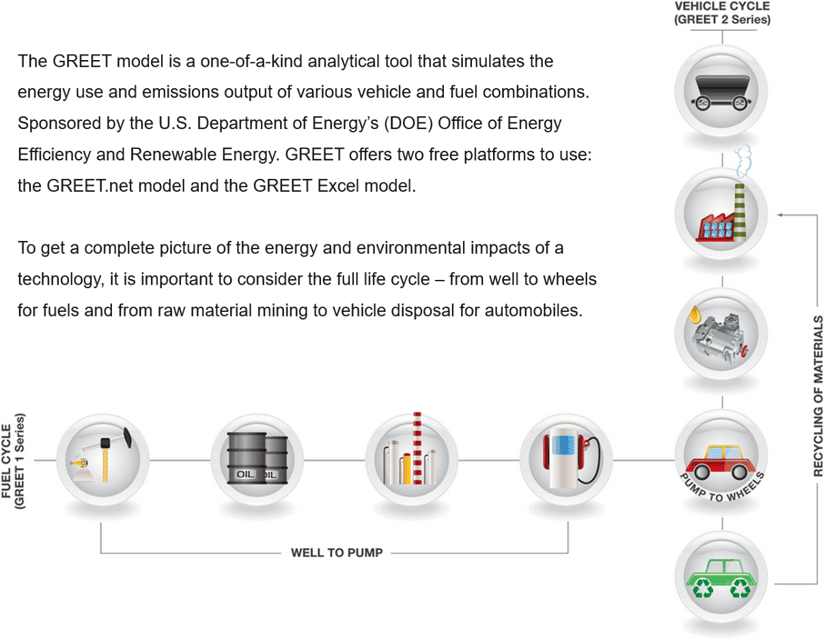Life Cycle Emissions Analysis
The U.S. Department of Energy's (DOE's) Hydrogen and Fuel Cell Technologies Office, along with other DOE offices, has been co-funding the development of and updates to Argonne National Laboratory's Greenhouse gases, Regulated Emissions, and Energy use in Technologies (GREET) model since 1995.
The GREET model characterizes life cycle emissions of hundreds of pathways to production of fuels, along with manufacturing emissions associated with conventional and emerging vehicle powertrains.
GREET currently has more than 40,000 registered users worldwide, including members of government, industry, and academia that use the model to inform research, development, and demonstration priorities and rulemaking efforts.
Stakeholders can access the GREET model on Argonne National Laboratory's website.

Illustrative GREET model scope
